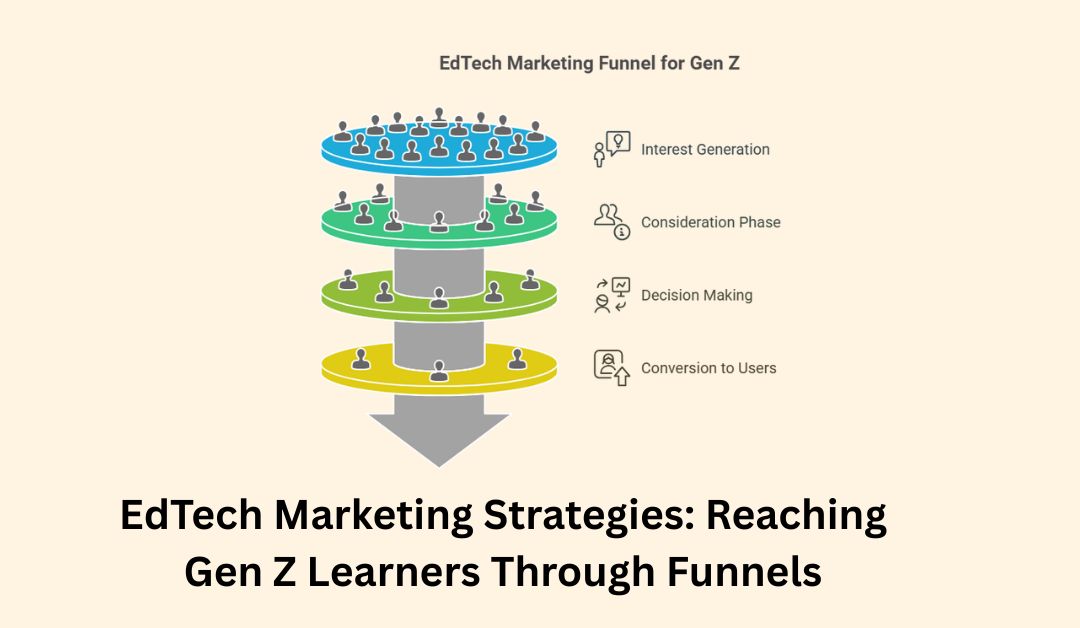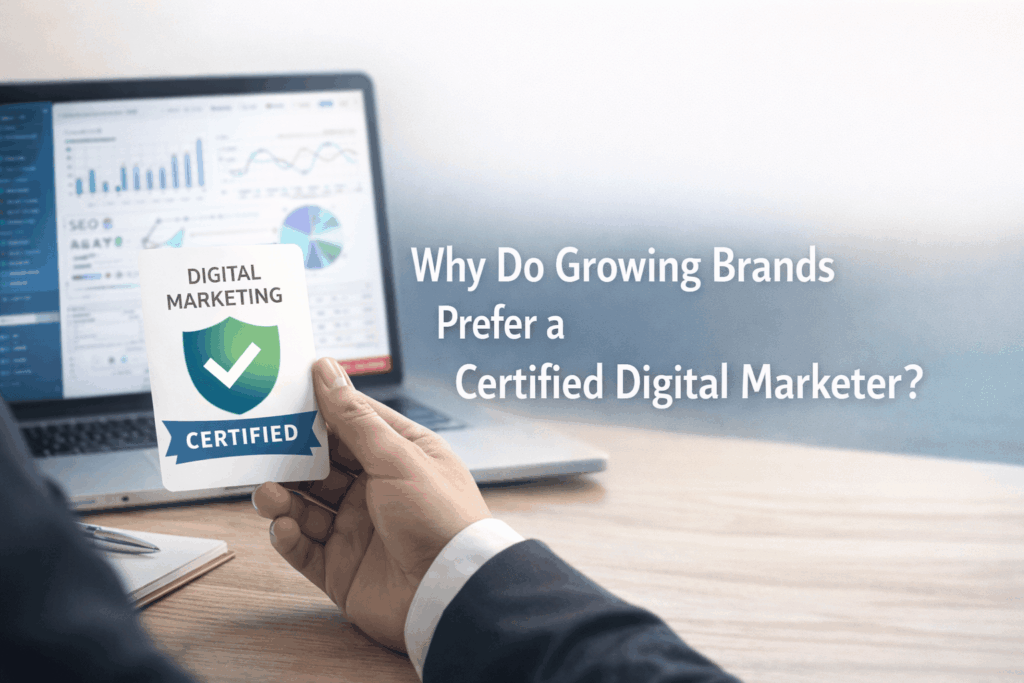Introduction
Imagine you’re on a fun treasure hunt. You start by spotting colorful clues, you follow a map, and finally you discover the hidden treasure chest. In the world of online learning, EdTech companies use a similar map called a marketing funnel to guide Gen Z learners from first hearing about a course to actually signing up and enjoying the lesson. This article will show you how to build an easy-to-follow funnel to reach Gen Z learners—kids born roughly between 1997 and 2012—and help them become excited students.
Understanding Gen Z Learners
Gen Z is the first generation to grow up fully immersed in digital devices—from smartphones to tablets. They learn best when information is:
- Visual: Bright images, short videos, and fun animations
- Interactive: Quizzes, polls, and games that let them participate
- Fast: Bite-sized content they can finish quickly between activities
Because they see so much online, drawing their attention takes creativity and strategy. This is where a clear funnel helps: you catch their eye, then keep them interested step by step.
Digital Marketing services in Chennai play a key role here by crafting eye-catching ads and social media posts that speak Gen Z’s language. By using emojis, GIFs, and relatable themes, these services help EdTech brands stand out in a crowded online playground.
What Is a Marketing Funnel?
A marketing funnel is like a slide in a playground—it gently moves kids from the top (where they stand and look around) to the bottom (where they land and play happily). The funnel has three main stages:
- Top of Funnel (TOFU) – Awareness: Getting noticed
- Middle of Funnel (MOFU) – Engagement: Building interest
- Bottom of Funnel (BOFU) – Conversion & Retention: Turning interest into action and keeping learners happy
By designing clear messages and fun experiences for each stage, EdTech companies can guide Gen Z learners smoothly.
Top of Funnel Strategies: Building Awareness
At the top of the funnel, Gen Z learners are simply exploring. They might scroll through Instagram reels, watch TikTok dances, or browse YouTube for quick hacks. Here’s how to grab their attention:
1. Short, Snackable Videos
- Why it works: Gen Z watches videos more than reading long text.
- How to do it: Create 15–30 second clips featuring a quick tip, like “3 Cool Facts About Space” or a fun “Word of the Day” challenge.
2. Social Media Challenges and Trends
- Why it works: Trending challenges feel like being part of a big, fun group.
- How to do it: Launch a simple quiz challenge—“Spell this tricky word in 15 seconds!”—and encourage learners to tag friends.
3. Collaborations with Influencers
- Why it works: Influencers have loyal followings who trust their recommendations.
- How to do it: Partner with a popular young educator on YouTube to feature your platform for a week.
Middle of Funnel Strategies: Engaging and Educating
Once you’ve caught their eye, it’s time to make Gen Z learners curious and willing to explore more. Middle-of-funnel tactics include:
1. Interactive Quizzes and Polls
- Why it works: Gen Z loves to test themselves and see instant results.
- How to do it: Offer a “Which Scientist Are You?” quiz that recommends courses based on quiz results.
2. Free Mini-Courses or Tutorials
- Why it works: Trying before buying builds trust and shows real value.
- How to do it: Provide a free 5-minute drawing lesson inside your app. At the end, invite them to unlock the full art program.
3. Engaging Email Series
- Why it works: Emails can deliver lessons right to their inbox without distractions.
- How to do it: Send a “7-Day Coding Challenge” email series, each with a fun project.
4. Gamification and Rewards
- Why it works: Points, badges, and levels make learning feel like a game.
- How to do it: Award digital badges for completing lessons and let learners share them on social profiles.
Bottom of Funnel Strategies: Converting and Retaining
Now that learners are interested, it’s time to help them take the final step—signing up or making a purchase—and keep them happy for the long term.
1. Clear Call-to-Action (CTA) Buttons
- Why it works: Gen Z likes things simple and direct.
- How to do it: Use bright buttons saying “Start Your Free Trial” right after a mini-course.
2. Limited-Time Offers and Exclusive Content
- Why it works: A sense of urgency pushes them to decide.
- How to do it: “Get 20% off your first month—offer ends in 48 hours!”
3. Easy Sign-Up Processes
- Why it works: Long forms cause drop-offs.
- How to do it: Allow sign-up through Google or social accounts with one click.
4. Personalized Learning Paths
- Why it works: Gen Z values uniqueness and control.
- How to do it: After sign-up, ask a few quick questions and tailor a course list just for them.
5. Community and Peer Support
- Why it works: They love sharing achievements and asking peers for help.
- How to do it: Build forums or chat groups where learners can post questions and tips.
Measuring Success: Key Metrics and Tools
To know if your funnel works, track simple numbers that even a kid can understand:
| Metric | What It Means | Why It Matters |
| Impressions | How many saw your ad or post | Shows your reach |
| Click-Through Rate | How many clicked vs. saw | Measures ad appeal |
| Quiz Completion Rate | How many finished the quiz | Reveals engagement level |
| Free Trial Sign-Ups | How many joined the free trial | Indicates interest in your courses |
| Conversion Rate | How many paid after free trial | Shows funnel efficiency |
| Course Completion Rate | How many finish the full course | Reflects learner satisfaction |
Use simple analytics dashboards like Google Analytics or built-in reports in your EdTech platform. Look at these numbers weekly to spot trends and tweak your funnel.
Tips for Creating Kid-Friendly Content
- Use Simple Words: Avoid big terms—say “fun” instead of “interactive engagement.”
- Add Lots of Pictures and Icons: A cute rocket or smiling emoji makes lessons look friendlier.
- Tell Short Stories: Begin a lesson with “Meet Alex, who dreamed of building robots…”
- Include Surprises: Add pop-up cheers—“Great job!”—when they answer right.
- Be Encouraging: Celebrate every win, even small ones.
These touches keep Gen Z learners smiling and coming back for more.
SEO Best Practices for EdTech Funnels
- Use Descriptive Headers: Make each section’s heading clear, like “How to Hook Gen Z with Videos.”
- Natural Keywords: Sprinkle your main keyword in the introduction and one variation near the end without disrupting the flow.
- Internal Links: Link to your blog posts or course pages within the article.
- Fast-Loading Pages: Gen Z hates waiting. Optimize images and code so pages load in under 3 seconds.
Following these steps ensures your article and website look good to both readers and search engines.
Bringing It All Together
Building a winning funnel for Gen Z means starting with fun, moving to curiosity, and ending with a rewarding course experience. By using snackable videos, interactive quizzes, clear CTAs, and simple language, EdTech brands can guide young learners from “I’ve never heard of this” to “I can’t wait for lesson two!”
And when you need expert help to shape your strategy, consider trusted partners like SEO companies in Chennai, who know how to make your content shine on search engines and attract more learners.
Conclusion
Marketing to Gen Z through funnels is like leading friends through a colorful maze: you offer exciting signs, playful challenges, and kind guidance at every turn. Keep your content simple, interactive, and visually appealing. Watch your metrics, tweak what isn’t working, and reward learners at every milestone. With these strategies, your EdTech platform will become a favorite stop in their online journey—and that hidden treasure of engaged, happy students will be yours to celebrate!









